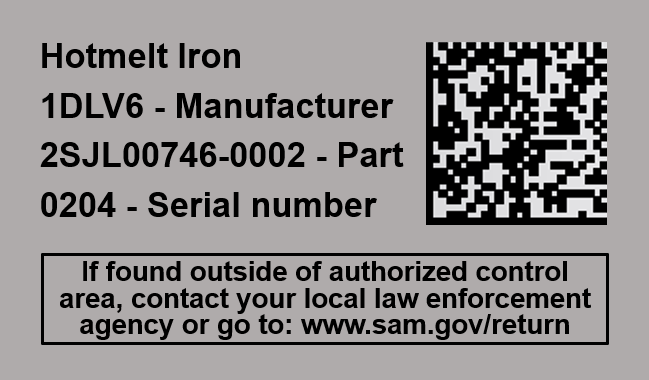When it comes to MIL STD 130, the Unique Identification (UID) and the Item Unique Identification (IUID) are two distinct things that are almost always printed together. What they are and what they are not, and what they do and what they don’t do are important to tease apart.
MIL STD 130
MIL STD 130 is a standard for marking government property that identifies the manufacturer, the part number and the serial number of the item it is affixed to. It also includes a 2-D data matrix, much like a QR code, that contains a globally unique, alphanumeric string made up of sub-alphanumeric strings.
Unique Identification (UID)
The UID has to contain a minimum of four things.
- CAGE code
- Part number
- Serial number
- 2-D matrix containing the Item Unique Identification (IUID)
Item Unique Identification (IUID)
The IUID is an alphanumeric string that is so ungainly and so long that it is more convenient to embed it in a QR code than to have the entire string written out. If you use the QR reader on your cell phone to scan the photo in this blog, you’ll see the string is:
- [)> 12CAG 1DLV6PNO 2SJL00746-0002SEQ 0204
In this sequence are the three, shorter alphanumeric strings printed on the MIL STD 130 tag.
- CAGE code (CAG): 1DLV6
- Part number (PNO): 2SJL00746-0002
- Serial number (SEQ): 0204
An IUID equivalent alphanumeric string is the vehicle identification number (VIN) and the electronic serial number (ESN) such as the International Mobile Equipment Identity (IMEI)

